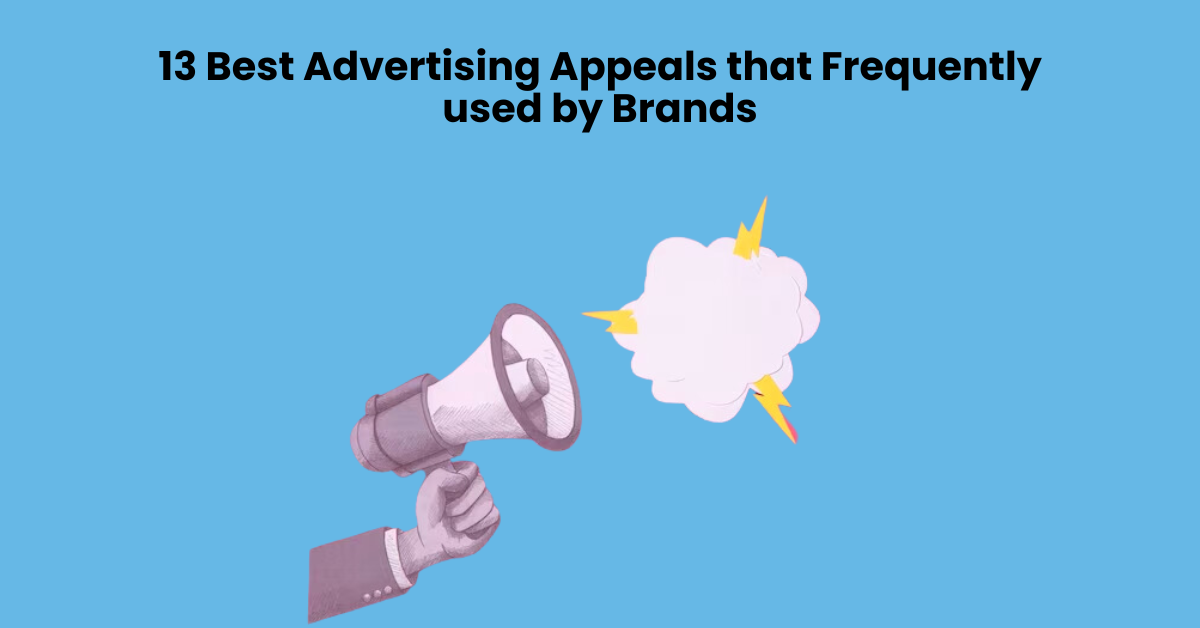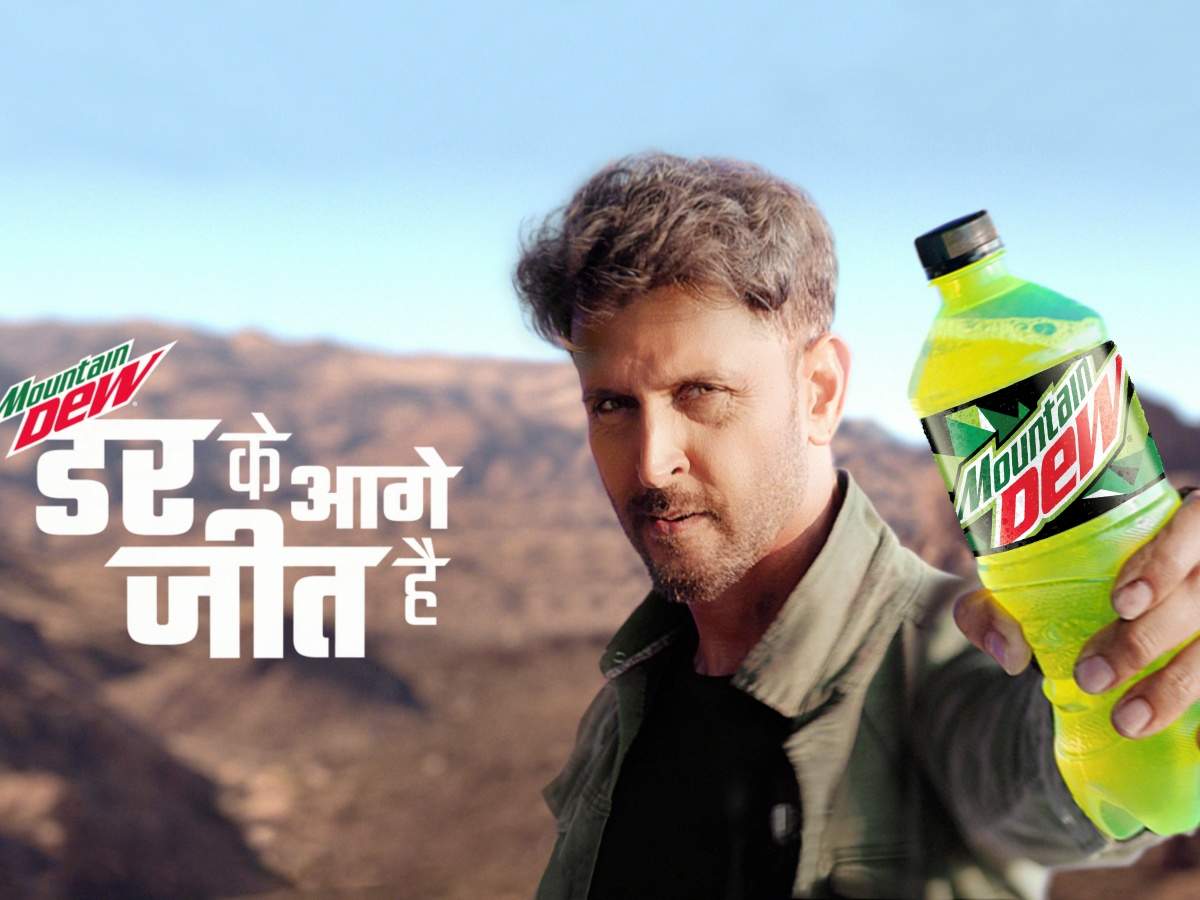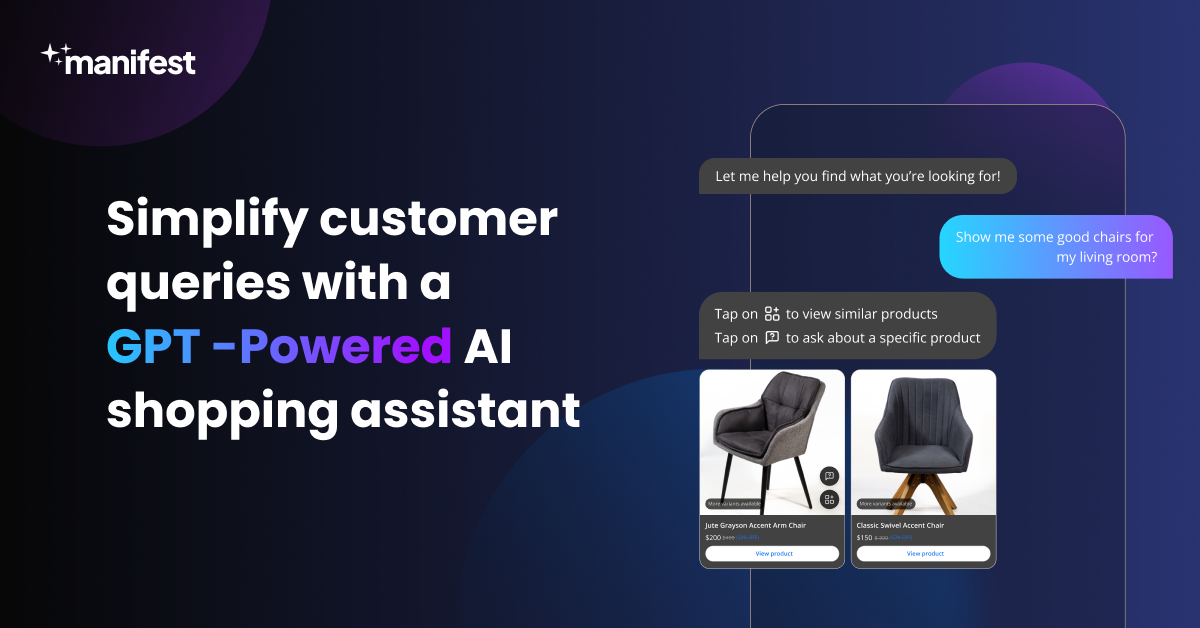13 Best Advertising Appeals that Frequently used by Brands

Did you know that the average person views between 4,000 and 10,000 advertisements per day? That's an enormous amount, and it's no surprise that brands are always competing for our attention. But what distinguishes some advertisements from others?
The strength of advertising appeals is the answer. These are the emotional triggers that brands employ to connect with us and influence our purchasing decisions.
This blog post will reveal the 13 most powerful advertising appeals used by brands to attract attention, create trust, and eventually convert customers. This information will give you the edge you need to produce strong and persuasive appeals in advertising campaigns, whether you're a seasoned marketer or just starting out.
What is advertising appeal?
The strategy employed by advertisers to catch the attention and interest of their target audience and persuade them to perform a specific action, such as purchasing a product, trying a service, or altering their behaviour, is referred to as advertising appeal. It is a creative method used in marketing campaigns to make a product or service more appealing and memorable to consumers.
Importance of advertising appeals
Advertising appeals are critical to the success of advertising campaigns. Here are some of the most essential reasons why advertising appeals are vital:
Getting people's attention
In a busy and competitive advertising scene, appeals aid in gaining the attention of the audience. A well-crafted appeal can help an ad stand out and attract attention.
Developing interest
Appeals can help generate interest and curiosity in a product or service. Advertisers can spark the audience's interest by making appealing and relevant appeals.
Making an emotional connection
Emotional advertising appeals, in particular, aid in the establishment of a strong emotional bond between the audience and the brand. This link can result in enhanced brand loyalty and favourable associations.
Differentiation
Appeals help to differentiate a product or service from competition by emphasising unique selling aspects, features, or emotional benefits.
Improving recall
Ads with memorable appeals are more likely to be remembered by consumers. When consumers are presented with options, this is critical for brand recognition and can impact purchasing decisions.
Influence & persuasion
Advertising appeals are a powerful instrument for persuasion. They have the ability to affect consumer attitudes, perceptions, and behaviours by appealing to emotions, reasoning, or a mix of the two.
Identifying specific audiences
Different demographic or psychographic groupings respond to different appeals. Advertisers can adapt their appeals to certain target audiences' tastes, values, and interests.
Improving message retention
Well-executed appeals help to improve message retention. Consumers are more likely to remember advertising messages that are conveyed in a captivating and engaging manner.
Boosting brand image
The appeals used help to shape the overall brand image. The advertising appeals utilised can influence whether a brand is viewed as innovative, reliable, enjoyable, or socially responsible.
Motivating action
The ultimate purpose of advertising is to elicit consumer action. Whether it's making a purchase, trying a new product, or engaging with a brand, appeals play an important role in persuading customers to take action.
Types of advertising
Advertising appeals or marketing appeals can be categorized into various types based on the emotional or rational elements they emphasize. Here are some common types of advertising appeals:
Emotional appeals
Fear: Creating a sense of fear or anxiety to persuade consumers to take a particular action.
Humor: Using humor to entertain and create a positive association with the product or brand.
Love and Sentiment: Eliciting emotions such as love, happiness, or nostalgia to connect with the audience.
Pity or Sympathy: Evoking feelings of sympathy or compassion to encourage support or action.
Rational appeals
Logic and Reasoning: Providing logical arguments and factual information to persuade consumers based on reasoning.
Value and Benefits: Highlighting the value and benefits of the product or service, focusing on practical advantages.
Scarcity and Urgency: Creating a sense of urgency or scarcity to prompt immediate action.
13 best advertising appeals examples
Here are the types of advertising appeals with examples of appeals:
Statistics appeal
Statistics appeal is a form of advertising approach in which numerical data, facts, or figures are used to persuade and affect the audience. Advertisers employ statistical data to showcase a product's or service's quantitative benefits, characteristics, or performance. Through a Performance Max Campaign, advertisers can effectively comprise statistical data to highlight these benefits across multiple channels, ensuring a broader reach and higher engagement.
Advertisers hope to make their statements more trustworthy and convincing to the target audience by offering concrete facts such as percentages, averages, or comparisons.
For example, a detergent commercial might present data suggesting a high percentage of stain removal or the product's efficacy in contrast to competitors. This technique appeals to consumers who base their purchasing decisions on logical and factual information, emphasising the product's measurable benefits.
Status appeal

A marketing appeal technique that aims to identify a product or brand with social distinction, luxury, or exclusivity is known as status appeal. The purpose is to instill in the consumer the belief that possessing or utilising the marketed goods improves their social standing. Advertisers frequently employ imagery, message, and branding to create a sense of sophistication or high social standing, capitalising on consumers' desire to be viewed as successful, powerful, or a member of an elite group.
Luxury automobile advertising, for example, frequently use status appeal by showcasing sleek designs, exquisite settings, and charming persons enjoying the high-end driving experience. The implication is that possessing the advertised luxury car indicates a particular amount of social standing and achievement.
Appeal for testimonials

The use of endorsements or testimonials from delighted consumers, celebrities, professionals, or influencers is a compelling advertising approach. The goal is to use other people's positive experiences and opinions to gain credibility and trust from potential customers. Testimonials offer a human element to the marketing message by proving that the product or service has benefited actual individuals.
For instance, a skincare product commercial might feature testimonials from people who have seen notable improvements in their complexion after using the product. pleasant evaluations and personal tales are intended to reassure buyers of the product's efficacy and persuade them to buy based on the pleasant experiences of others.
Scarcity appeal
Scarcity appeal is a marketing technique that emphasises restricted availability, time-sensitive offers, or one-of-a-kind possibilities to generate a sense of urgency or exclusivity. The idea is to push consumers to act quickly, fearing they will miss out on a product or deal if they wait. Scarcity appeals take advantage of the psychological premise that individuals value objects more when they perceive them to be rare or in great demand.
"Limited-time offer!" for example. Only 24 hours left to save 50%!" This sort of advertisement capitalises on consumers' fear of missing out (FOMO), urging them to act swiftly in order to obtain a bargain that may not be available later. Scarcity appeals are frequently utilised to elicit fast consumer response during sales events, promotions, or product debuts.
Brand appeal
Brand appeal is a marketing strategy that focuses on promoting and improving a brand's overall image, values, and reputation. Rather of emphasising specific product attributes, this strategy seeks to foster a positive perception and emotional connection with the brand as a whole. Advertisers utilise brand appeal to create a distinct identity, foster loyalty, and impact consumer sentiments towards the brand.
For example, Apple's marketing frequently emphasises its devices' sleek design, innovation, and user experience, generating a brand appeal centred on elegance and cutting-edge technology. Apple items may be chosen not only for their functionality, but also for their identification with the brand's particular image and ideals. Brand appeal is especially crucial for businesses looking to stand out in competitive sectors.
Appeal for Sympathy

In advertising, empathy appeal entails connecting with the target audience's emotions and experiences by demonstrating understanding, sympathy, and relatability. Advertisers employ this method to establish a deep emotional bond with consumers by demonstrating that they recognise and share similar issues, needs, or values. Brands hope to build trust and resonance with their audience by eliciting empathy.
A health insurance advertising, for example, might represent a family grappling with a medical problem. The message expresses empathy by recognising the emotional and financial problems that families suffer during such times, while the promoted insurance product is presented as a solution that understands and supports these hardships. Empathy appeals are excellent at creating a personal connection and increasing brand loyalty.
Youth appeal

Youth appeal in advertising is a strategy that incorporates characteristics, ideas, and trends that resonate with youth culture to attract a younger demographic. Advertisers grab the attention and interest of younger consumers by using colourful imagery, contemporary language, and references to current trends. This strategy tries to link the brand with the youth market's energy, passion, and inclinations.
Clothing firms, for example, frequently exploit youth appeal by presenting trendy trends, music, and influencers who are popular among young consumers. The marketing words and graphics are designed to match the target demographic's dynamic and current lifestyles, building a connection and making the brand more relatable to the youth audience. In industries such as fashion, technology, and entertainment, youth appeal is widely exploited.
Appeal to popularity
Popularity appeal in advertising focuses on emphasising a product's or service's widespread acceptance and use. Advertisers employ this method to express that a vast number of people prefer and support their service, with the goal of influencing potential customers by emphasising the product's popularity. People are generally drawn to what is widely accepted or desired by others, according to the underlying psychology.
For example, social media networks typically utilise popularity appeal to portray the platform's widespread adoption by displaying the number of users, followers, or likes. In numerous product promotions, phrases like "Join millions of satisfied users" or "The #1 choice of customers" harness popularity appeal to inspire confidence and attract buyers looking for widely approved solutions.
Endorsement appeal
Endorsement appeal is a marketing approach that involves using well-known personalities, celebrities, experts, or influencers' approval, support, or recommendation to increase the legitimacy and attractiveness of a product or brand. Advertisers hope to transmit good features, values, or qualities from the endorser to the promoted offering by linking a renowned figure with the product.
Example: A sports drink advertisement featuring a well-known athlete emphasising the drink's hydration and performance benefits. The athlete's endorsement is meant to generate a favourable association with the product, implying that it is effective and trusted by someone with competence or influence in the relevant field. Endorsement appeal can have a big impact on consumer perception and purchasing decisions, especially if the endorser is well-liked or regarded by the target group.
Appeal to fear
Fear appeal is a psychological advertising tactic that seeks to elicit dread or worry in the audience in order to promote a specific behaviour, action, or product. Advertisers use fear's emotional impact to build urgency, push consumers to take precautions, or highlight potential bad repercussions. This strategy frequently exploits people's fears, doubts, or vulnerabilities to influence their decisions.
Anti-smoking efforts, for example, commonly exploit fear appeal by displaying graphic visuals of smoking's health repercussions, such as diseased lungs or individuals suffering from smoking-related ailments. The goal is to generate fear and discourage smoking behaviour by emphasising the potential health risks. Fear appeal can be a powerful motivator, but it must be used with caution.
Romantic appeal
In advertising, romantic appeal is a tactic that uses themes of love, passion, and romantic relationships to create an emotional connection with the audience. Advertisers frequently use romantic imagery, storylines, or symbolism to elicit good emotions and transfer desired traits onto the offered product or brand. This strategy seeks to associate the product with idealised concepts of love and connection.
Perfume commercials, for example, commonly leverage romantic appeal by featuring personal situations, attractive surroundings, and evocative music to create a romantic and alluring vibe. The message implies that applying the marketed perfume will make the client more beautiful and contribute to a romantic experience. Romantic appeal is frequently used in industries such as scent, jewellery, and fashion to capture consumers' attention.
Humor appeal
In advertising, humour appeal is a strategy that uses comic aspects such as jokes, hilarious situations, or amusing personalities to entertain the audience and generate a good association with the product or brand. Advertisers hope to make their message more remembered, likeable, and shareable by inducing laughter, hence increasing the total impact of the campaign.
For example, Super Bowl commercials are well-known for their excellent use of humour. Companies such as Doritos and Budweiser produce amusing and memorable advertisements that entertain viewers while quietly conveying vital messages about their products. Humour can be a great weapon for breaking through advertising clutter and engaging with customers on a more emotional level. However, advertising must guarantee that the humour is appropriate.
Appeal to adventure
In advertising, adventure appeal is a tactic that appeals to consumers' desire for excitement, novelty, and exhilarating experiences. Advertisers catch the audience's attention and inspire interest in the promoted product or service by using imagery, storytelling, or message that evokes a sense of adventure. This strategy works especially well in areas such as travel, outdoor activities, and lifestyle products connected with exploration and discovery.
Ads selling adventure sports equipment or holiday destinations, for example, frequently use adventure appeal by featuring people engaged in exhilarating activities such as mountain climbing, surfing, or zip-lining. The goal is to relate the product to the idea of embarking on thrilling and adventurous travels. The adventure appeal communicates to consumers who are looking for distinctive and exciting experiences, placing the
Which two are among the most common advertising appeals?
The following are two of the most popular advertising appeals:
1. Fear Appeal: This appeal uses people's innate fears and anxieties to urge them to act. It is frequently used to market things that provide protection or security, such as insurance, security systems, and health-related items.
2. Humour Appeal: This appeal makes the product or brand more likeable and memorable by using humour. It can also be utilised to disarm viewers, making them more open to the advertising message. Humour is a versatile appeal that can be applied to a variety of products and companies.
Which potential problem when using humorous appeals in advertising?

A potential problem when using humorous appeals in advertising is that the humor may not resonate with or be understood by the entire target audience, leading to confusion or offense. Additionally, the humor might overshadow the product or message, resulting in the audience remembering the joke but forgetting the brand or product being advertised.
How AI tools can help you with modern advertising appeals?
Advertising appeals are crucial in creating impactful marketing messages that resonate with audiences. In today's digital era, tools like Manifest AI enhance how these appeals reach and engage customers in e-commerce settings, particularly on platforms like Shopify. Manifest AI, an AI-powered chatbot, can be utilized to reinforce advertising messages and appeals through personalized customer interactions on online stores.
Manifest AI's capabilities include:
- Personalized Customer Engagement: It interacts with store visitors, using data-driven insights to tailor conversations, aligning with your brand's advertising appeal.
- Effective Product Recommendations: By understanding customer preferences, it suggests products in line with the advertising themes, enhancing customer experience and potentially boosting sales.
- 24/7 Customer Support: Provides consistent support, ensuring that the advertising message is effectively communicated at all times.
- Multilingual Capabilities: Extends the reach of your advertising appeal to a diverse, global audience.
Conclusion
Finally, recognising and implementing these 13 advertising appeals can significantly boost your marketing efforts. You can generate persuasive messaging that resonates with your target audience and drives them to take action by tapping into common human emotions and wants. However, keep in mind that the most successful advertising strategies frequently mix various appeals for a synergistic effect. Experiment, analyse results, and fine-tune your approach to find the ideal blend that will power your brand's success.

.png)
